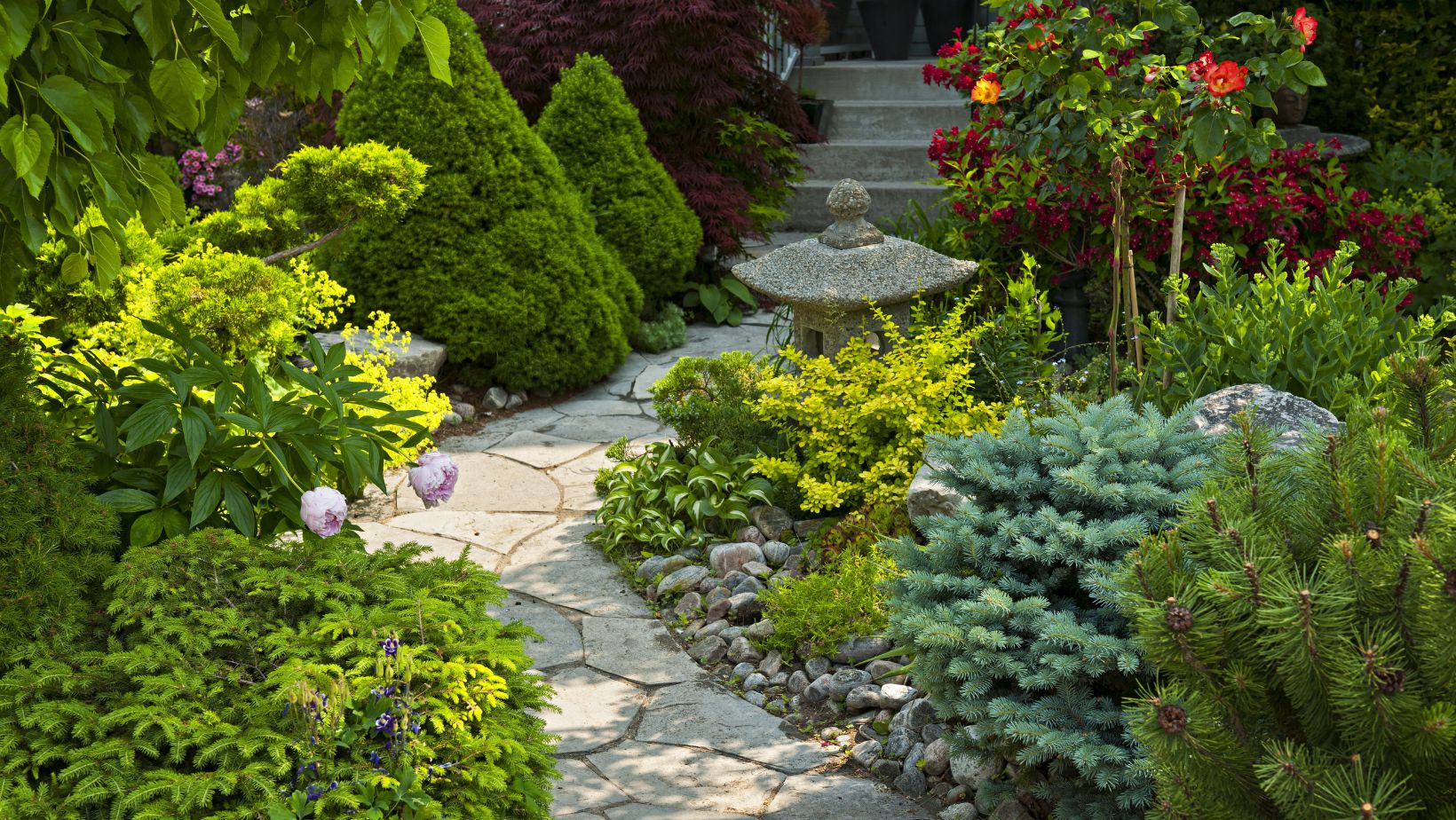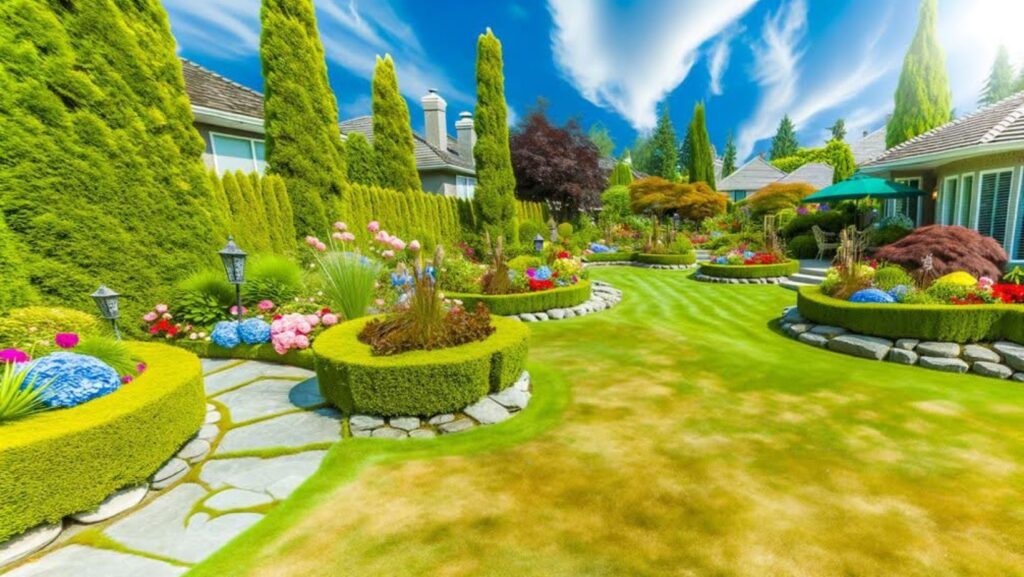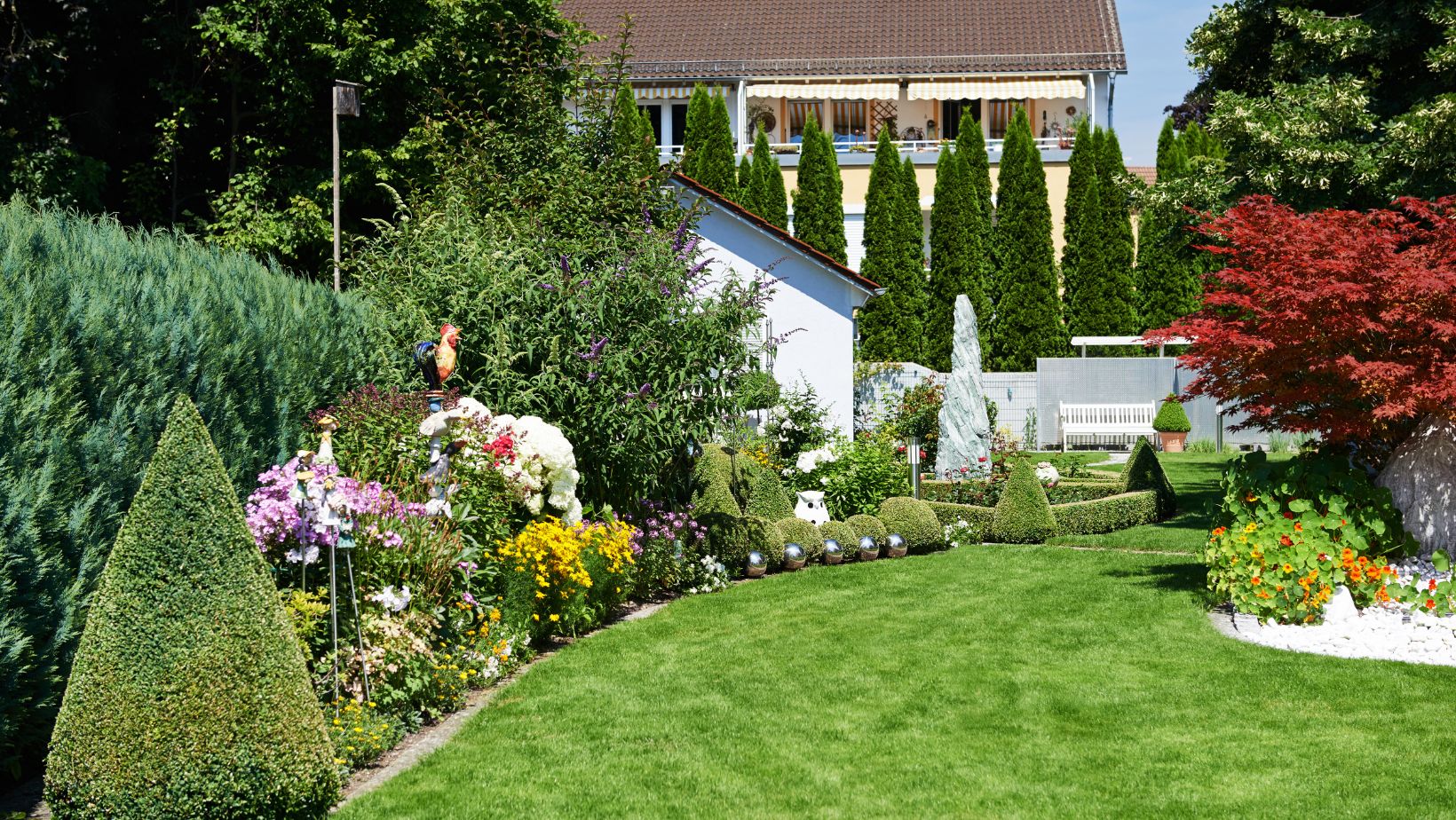Did you know that professionally landscaped homes can have a price advantage of 5.5% to 12.7% over non-landscaped homes? When you consider hiring a residential landscaping service, you’re not just enhancing your property’s curb appeal; you’re also making a smart investment. Skilled landscapers use fundamental design principles, color schemes, and sustainable practices to craft outdoor spaces that are both beautiful and functional. But what exactly goes into creating a standout landscape, and how do you ensure it remains pristine year-round? Let’s explore the key elements that make a professional landscape truly exceptional.
Contents
Table of Contents
ToggleBenefits of Professional Landscaping
Professional landscaping transforms your outdoor space by integrating technical expertise, aesthetic vision, and sustainable practices. When you invest in professional landscaping, you’re not just enhancing the beauty of your property; you’re also significantly boosting its curb appeal and property value.
Expert landscapers use their technical know-how to create designs that ensure your yard isn’t only beautiful but also functional and sustainable. They understand the nuances of soil quality, plant types, and climate conditions, ensuring that every element works together harmoniously.
Good landscaping doesn’t just look good; it’s a long-term investment. A well-designed landscape can increase your property’s market value by up to 20%. This is because potential buyers are often willing to pay more for homes that offer an aesthetically pleasing and well-maintained outdoor space.
Additionally, a professionally landscaped yard can make your home stand out in the neighborhood, capturing the attention of passersby and enhancing overall curb appeal.
Sustainable landscaping practices, such as using native plants and efficient irrigation systems, not only conserve resources but also reduce maintenance costs. By marrying aesthetics with sustainability, you get an outdoor space that’s both beautiful and eco-friendly.
Key Elements of Landscape Design
Understanding the key elements of landscape design is crucial for creating an outdoor space that combines aesthetic beauty, functionality, and sustainability. Start with the fundamental design principles: balance, contrast, harmony, and scale. Achieving balance involves distributing visual weight evenly across your landscape. Contrast adds interest by placing different textures, colors, or forms next to each other. Harmony ensures all elements work together to create a cohesive look, while scale ensures that all components are proportionate.
Color schemes play a pivotal role in setting the mood of your outdoor space. Warm colors like reds and yellows can make areas feel inviting and lively, while cool colors like blues and greens offer a calming effect. Use a color wheel to determine complementary colors that enhance your design.
Incorporate sustainable practices by using native plants, conserving water, and reducing waste. For instance, choose drought-resistant plants and install efficient irrigation systems to minimize water usage.
Plant Selection and Placement
After mastering the key elements of landscape design, selecting and placing the right plants will elevate your outdoor space by enhancing its beauty, functionality, and sustainability.
Start by assessing your site’s soil quality. Test for pH levels and nutrient availability to ensure your plants thrive. Based on the results, you might need to amend the soil with organic matter or specialized fertilizers.
Next, consider climate compatibility. Choose plants that are suited to your local climate conditions to reduce water usage and maintenance. Native plants are often the best choice as they’re adapted to the local environment and support local wildlife.
Think about the aesthetic vision you want to achieve. Use a mix of evergreen and deciduous plants to maintain year-round interest. Layer plants by height and texture to create depth and visual intrigue. Place taller plants at the back of borders and shorter ones in front to ensure visibility and access.
Hardscaping and Outdoor Structures
Incorporate hardscaping elements like patios, walkways, and retaining walls to add both functionality and aesthetic appeal to your landscape design. A well-planned patio installation not only creates an inviting outdoor living space but also enhances the structural integrity of your landscape. Choose durable materials like stone, brick, or concrete pavers that complement your home’s architecture while ensuring longevity and minimal maintenance.
Walkways guide visitors through your garden, creating a harmonious flow and connecting different areas.

Opt for sustainable materials like permeable pavers, which reduce water runoff and promote groundwater recharge.
Retaining walls can transform sloped areas into usable flat spaces, providing both erosion control and an opportunity for terraced planting beds.
Outdoor kitchens elevate your backyard into an entertainment hub, making it perfect for gatherings and family meals. When designing your outdoor kitchen, prioritize weather-resistant materials and efficient layouts to maximize functionality.
Incorporate energy-efficient appliances to align with sustainable practices.
Maintenance and Upkeep Tips
Regular maintenance is crucial to preserving the beauty and functionality of your landscape design while promoting sustainability and longevity.
Start with seasonal pruning to shape your plants and remove any dead or diseased branches. This practice not only enhances the aesthetic appeal but also encourages healthy growth and resilience against pests and diseases.
Lawn aeration is another critical step. By perforating the soil with small holes, you allow air, water, and nutrients to penetrate the grass roots more effectively. This process helps alleviate soil compaction, promotes root development, and creates a lush, green lawn.
Perform lawn aeration at least once a year, ideally during the growing season for cool-season grasses, and in late spring or early summer for warm-season varieties.
Incorporate sustainable practices like mulching to retain soil moisture, suppress weeds, and regulate soil temperature. Opt for organic mulches such as wood chips or straw, which decompose and enrich the soil over time.
Additionally, regularly inspect your irrigation system to ensure efficient water use, avoiding over-watering and reducing runoff.
Choosing the Right Landscaping Service
To maintain the high standards of your landscape’s design and health, selecting the right landscaping service is vital. First, evaluate your budget considerations. Determine how much you’re willing to invest in professional landscaping. This helps in narrowing down services that offer the best value without compromising quality. Ask for detailed quotes and compare them against your financial plan.
Next, assess the company’s technical expertise. Look for certifications, years of experience, and specialized skills that align with your project needs. A company proficient in sustainable practices will ensure your landscape isn’t only beautiful but also eco-friendly. Inquire about their use of native plants, water conservation techniques, and organic fertilizers.
Communication strategies are equally crucial. Opt for a service that prioritizes clear, consistent communication. They should be open to discussing your aesthetic vision and provide regular updates. Effective communication ensures your expectations are met and any issues are promptly addressed.
Lastly, check references and read reviews. Speak to past clients to gauge their satisfaction and the company’s reliability. By meticulously evaluating these factors, you’ll secure a landscaping service that enhances both the beauty and sustainability of your residential landscape.
Conclusion
Imagine your yard as a blank canvas. With professional landscaping, it transforms into a masterpiece.
Just like how a skilled artist uses color and texture to create a stunning painting, expert landscapers blend plants, hardscapes, and sustainable practices to craft a beautiful and functional outdoor space.
Homeowners often see a 15% increase in property value after professional landscaping.
So, don’t just dream about a gorgeous yard—let the experts bring that vision to life.


